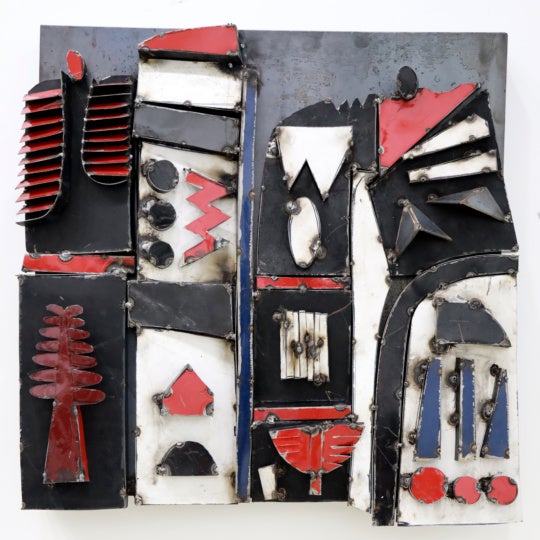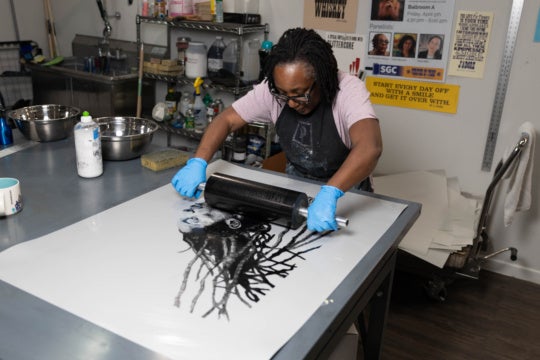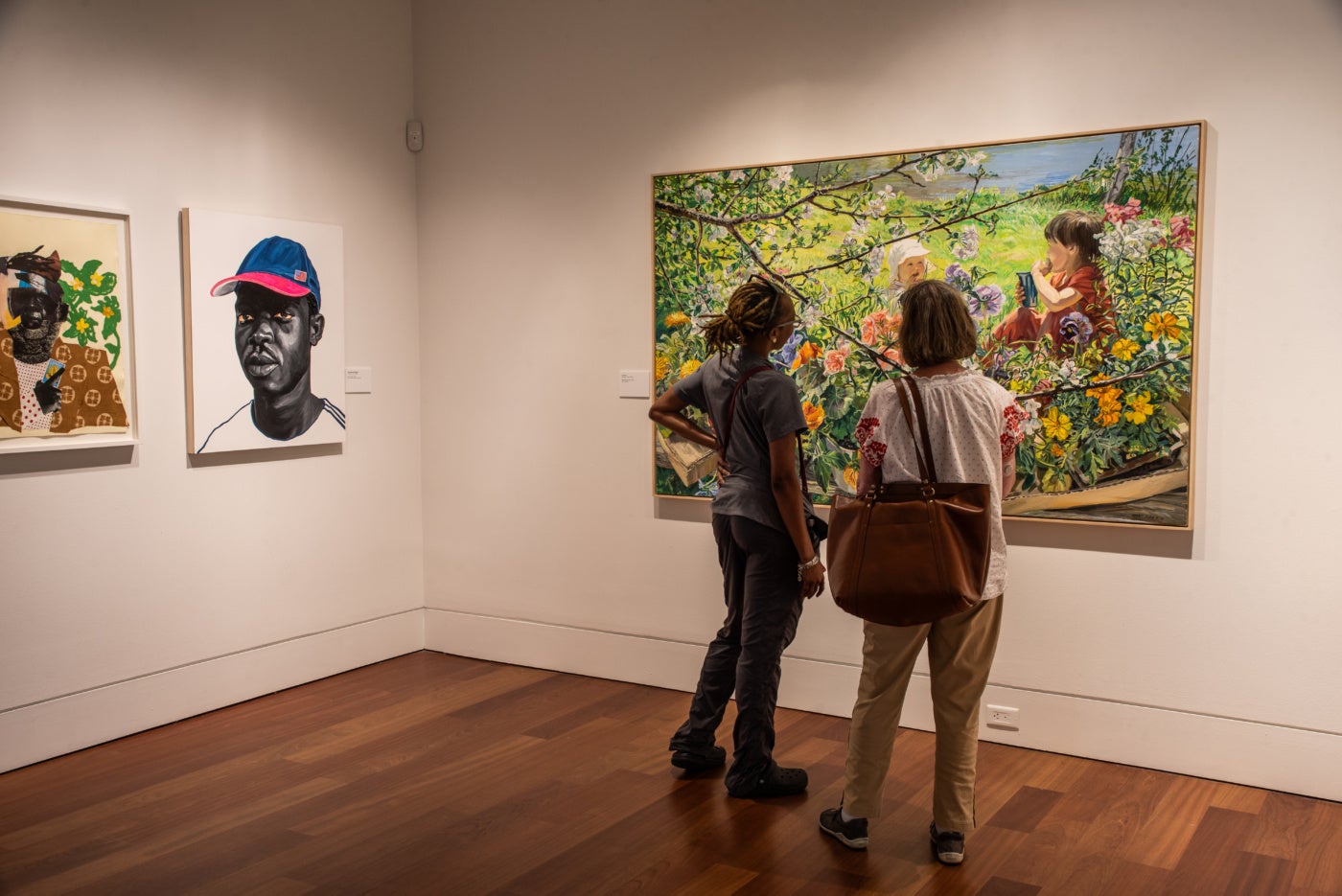
With 130 works by over eighty artists, Cameron Art Museum’s show We Belong Here: The Gutierrez Collection is expansive. A show this large, diverse, and modern—most of the work was made in the twenty-first century—is exciting and difficult to summarize. What adds to the excitement is that Wilmington feels off the beaten path. This small port city in North Carolina is known for summer beach tourism and historical monuments, not contemporary art.
Upon entering the gallery, the exhibition’s title emerges from the neon lettering found in We Belong Here (2012) by Tavares Strachan. The show is bold in its presentation and contrasts, setting conceptual artists like Strachan next to large, blown-glass sculptures by Tlingit artist Preston Singletary, and abstract work like Carmen Neely’s oil painting, You’ve come a long way, baby (2022) beside graphic prints like David LaChapelle’s Amanda as Marilyn (Red) (2007).
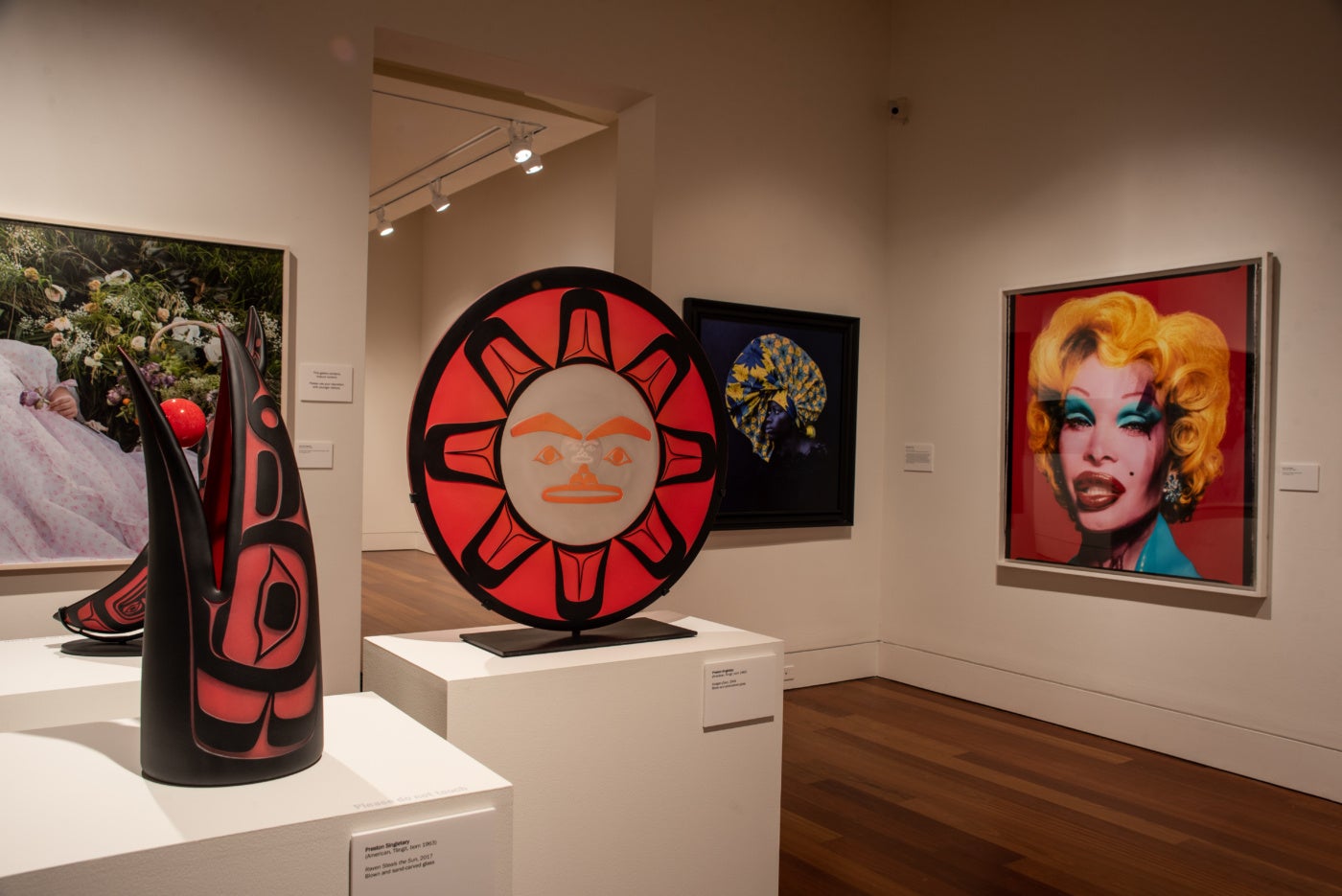

All hailing from the private collection of North Carolina collectors Onay Gutierrez and Jeff Childers, We Belong Here is the first public exhibition of their collection. Part showcase and part statement, the exhibition text tells visitors that the collection “[…] reflects contemporary ideas around mental health; LGBTQ rights; Latin/Latinx, African, and African Diasporic identities, as well as broader explorations of activism, protest, and civil disobedience.”[1] Even if the most salient aspect of this show is that it’s all owned by the same people, that sentiment is quickly forgotten when I see Ester Hernandez’s Sun Raid (2008), a screenprint of a meticulously parodied Sun-Maid raisin box. Instead of a white girl who has never picked a grape in her life, the oversized bonnet sits atop the head of a smiling calavera wearing an ICE ATD[2]—an electronic monitoring bracelet ICE utilizes to surveille immigrants. Not only does Hernandez’s work feel prescient, but its wit and simplicity proves just how potent art can be—a major theme in the Gutierrez Collection.
Astounding and vital work in this same vein can be found at every turn. Artists I have only read about, like Ana Segovia, hang on nearly every wall. Fact of the Matter (2018), one of Segovia’s two hilarious paintings in the show, depicts two cartoony art collectors mid-schmooze. One holds that eternal signifier of wealth—a martini—and faces the other, whose back is to the viewer. Over his shoulder lies their latest acquisition—a preschoolesque finger painting of a desert landscape. Painter Jake Troyli’s pieces titled On Your Marks! (2021) and The Crowd Surfer (2021) are less overtly funny than Segovia’s, but prove that Gutierrez and Childers have a slightly wicked sense of humor.
I wish I could have visited We Belong Here over a period of days, but my experience mimicked the typical visitor’s—taking place in one crammed afternoon. I particularly wanted to spend more time with the more than thirty-five vibrant and exquisite portraits. Most are painted, but some are collage and some are augmented photographs, like Mickalene Thomas’s I’ve Been Good to Me (2015), whose work I’ve also wanted to witness in the flesh. Many of the subjects are Black and Brown men and women with their bodies centered and their eyes focused, often looking straight into one’s own. Otis Kwame Kye Quaicoe’s oil painting Body of Mind (2022) is a close-up of a man in a baseball cap, his face rendered in a photo-realistic style while his T-shirt is merely outlined, almost fading away. Adjacent to Thomas and Quaicoe are portraits with bright explosions of colors, like Kehinde Wiley’s Mrs. Hale as “Euphrosyne” (2005), and the potential energy of the crouching man in Peter Uka’s absorbing First Ride (2023).
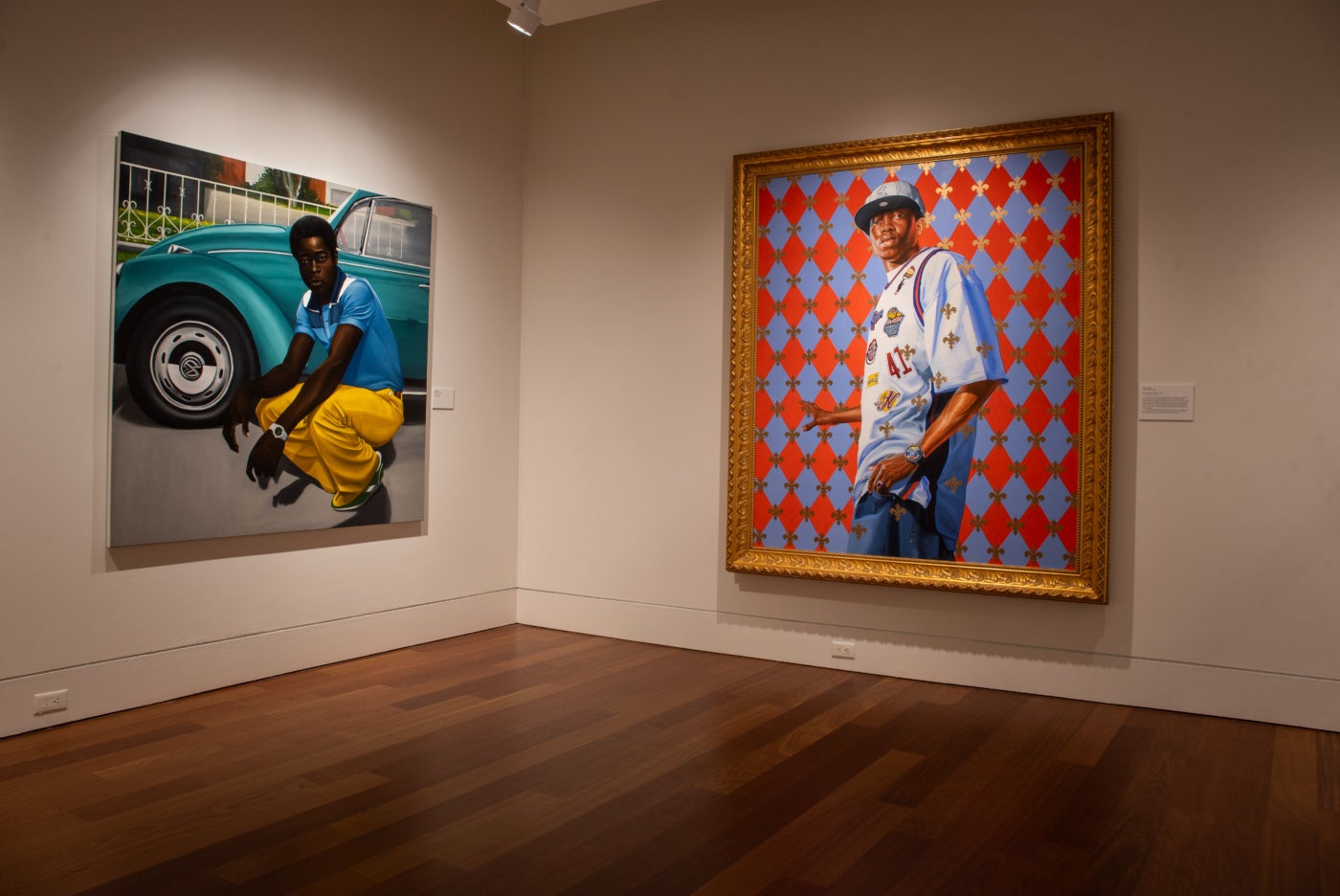
Some pieces held my attention because of how quiet they were in comparison. One such painting was Jerrell Gibbs’s portrait, Salvador in Purple and Gray (2021)—a piece I came back to throughout the show like a guiding star. Salvador, extracted from whatever environment he was previously in, stands situated in a blurry world of muted pinks and greys. He wears an oversized lavender T-shirt and, unlike the other portraits, he’s a bit left of center, and shown only from about the waist up. Thin arms dangle from his sleeves. One arm’s fingers extend past the bottom of the frame, letting us see even less of him. Salvador looks like a young boy and an older man simultaneously.
Light shines harshly from above, so that his head casts a shadow on his own shirt. His eyes are hard to see, closed or squinting from the bright light—a mysterious light since no clues point to where Salvador might be. Outside? In the artist’s studio? I texted a photo of this painting to my friend Alison and she called Gibbs’s brush strokes deliberate. As a practicing painter, what she meant technically I may never understand, but what thrilled me about her response was its connotation of assuredness. It is precisely a precarious assuredness that vibrates through the work.
Through my entire experience of We Belong Here, I felt my heart break open again and again at the tenderest works in the show like Gibb’s painting, Shizi Salmando’s beautifully moving Lupe with Mexico Cap (2024), Deborah Roberts’s collages, Ian Michael’s Hard Bop in the Sheets (2021), Hayv Kahraman’s Mustache Mask (2021), and Side By Side (2022) by Amoako Boafo. I wondered if a smaller presentation or different curatorial approach would have moved me as much. The way the rooms overflowed with bodies, stories, messages, and energy made the quieter pieces sing out.
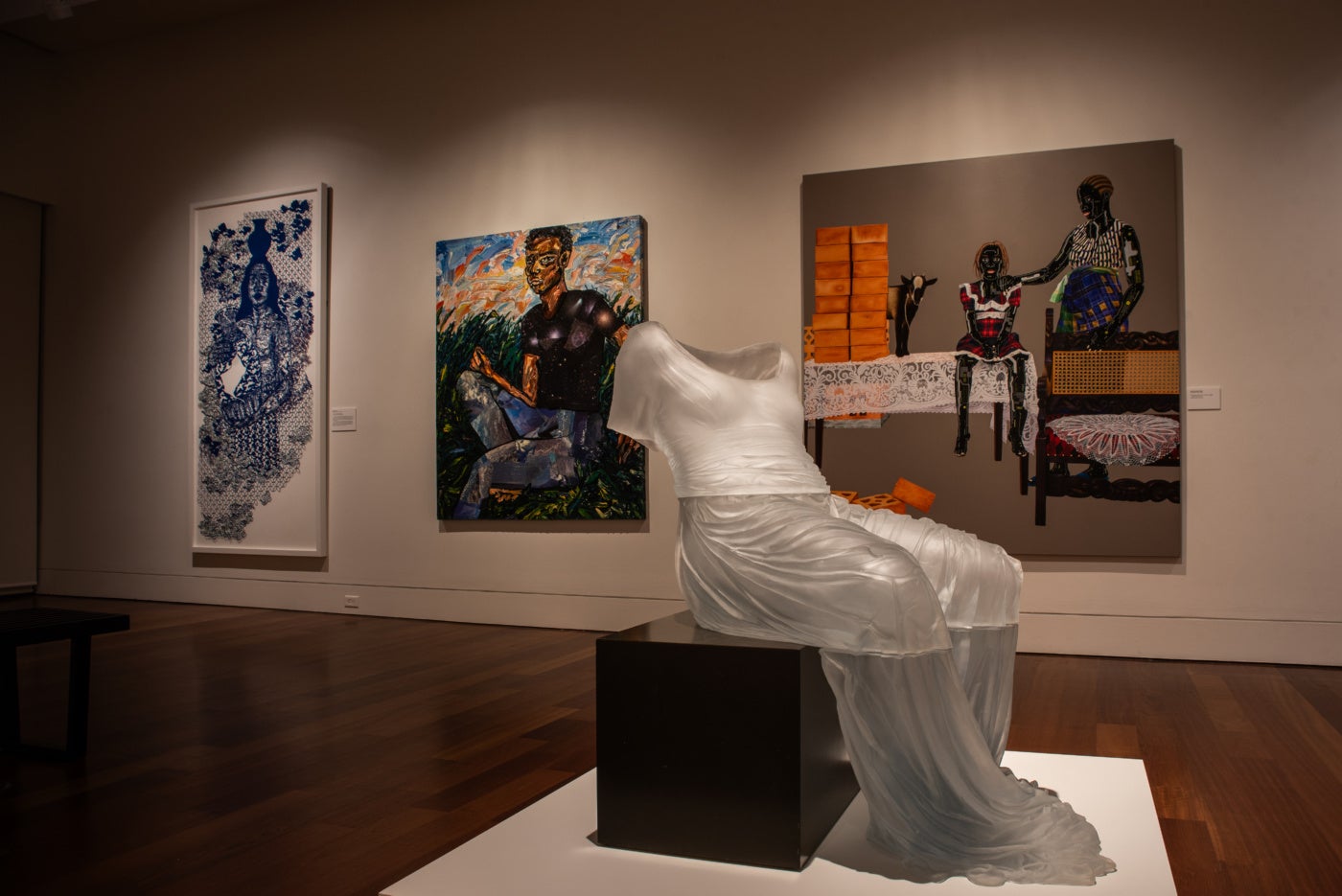
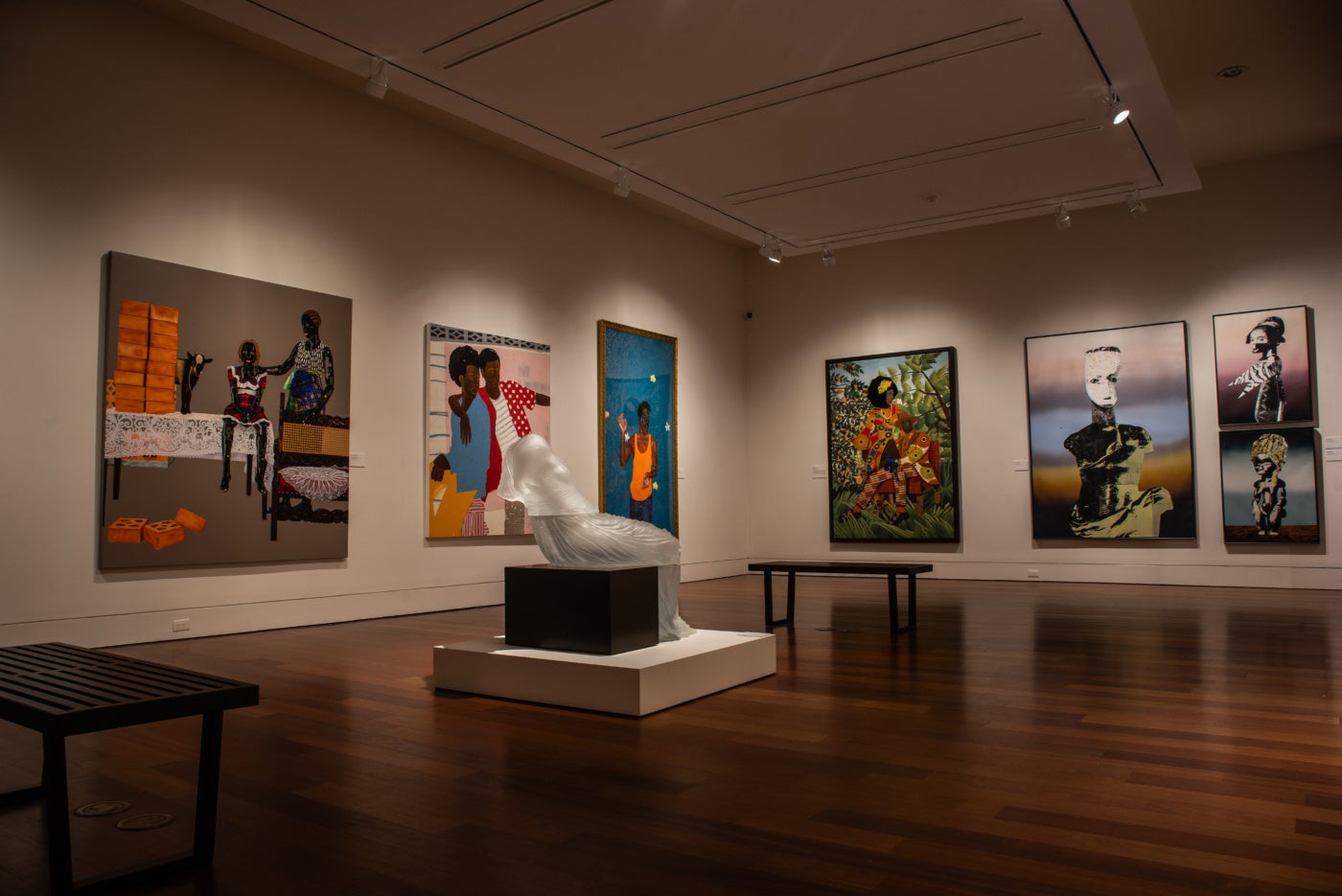
With its power, its breadth, its clear foregrounding of queerness, its staunch focus on Black and Brown identity, We Belong Here is a show for Wilmington. For North Carolina. For the South. As the United States weathers a barrage of laws and actions that threaten immigrants, queer people, the sick, and the poor, it’s a show for the country.
As governmental leaders pull funding from cultural institutions and begin to oversee the content of their programming, will museums depend on the collections of private collectors more? Will private collectors be freer than museums to collect work that is about something other than family values? Will they be the only ones who are able support work that is utterly contemporary? That speaks for those who are being eliminated? These are questions I carried as I wandered We Belong Here. Questions that seemed especially significant to me because I was able to see the show thanks to a travel grant from a private institution, the Rabkin Foundation, which paid for my gas from Richmond, museum entrance fee, and hotel room.
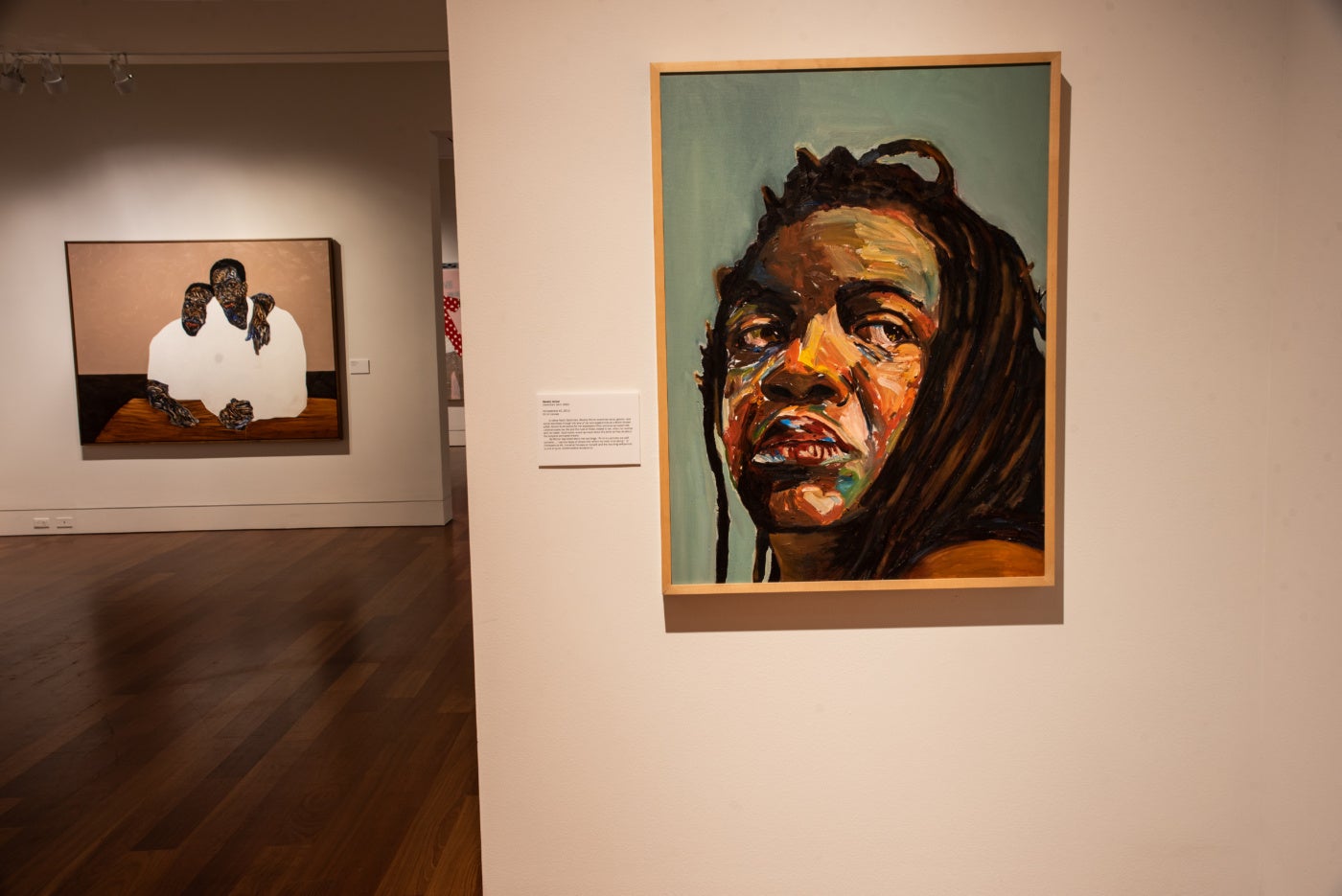
We Belong Here is a wild show. It’s all over the place, but it never veers from its message of inclusivity, acceptance, and belonging. This is the stated aim of the Gutierrez Collection itself, but I wonder too if Gutierrez and Childers themselves also embody a version of “we belong here.” That collectors like them belong here—in the South, in North Carolina, in the art world. That art collectors who have a mission beyond financial investment belong here.
The way the rooms overflowed with bodies, stories, messages, and energy made the quieter pieces sing out.
In an interview with Cameron Art Museum (CAM) Executive Director Heather Wilson, Gutierrez and Childers are asked about why they want to show their private collection in public museums—the show moves to the North Carolina Museum of Art in Winston-Salem after it leaves CAM. “We don’t feel we truly own it,” Childers says. “It has the potential to create impact.”[3] These kinds of statements I expect from museum workers, not private collectors. Maybe it’s time to change my expectations.
[1]“We Belong Here: The Gutierrez Collection,” Cameron Art Museum, accessed August 4, 2025, https://cameronartmuseum.org/exhibition/we-belong-here-the-gutierrez-collection/.
[2] ICE ATD stands for Alternatives to Detention (ATD) program, originating in 2002.
[3] CAM After Dark: Conversation with the Collectors: The Gutierrez Collection, (Cameron Art Museum, 2025).

